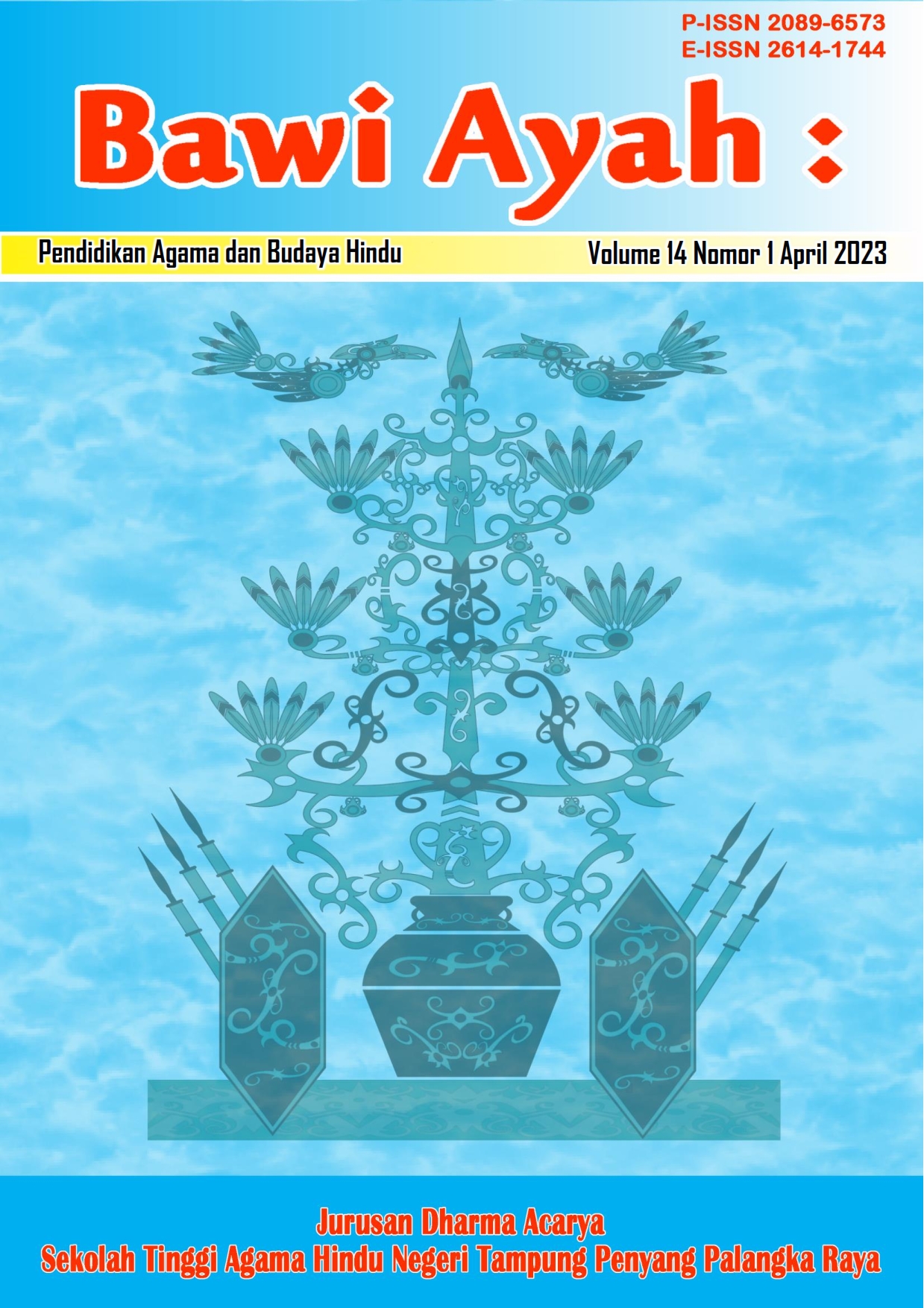IMPLEMENTASI NILAI-NILAI CATUR WARNA PADA PENDIDIKAN HINDU: KAJIAN PENDIDIKAN INFORMAL
Abstract
In this modern life, the role of parents is demanded to be able to provide education and understanding of Hindu religious values, so that it is expected to be able to strengthen virtuous character education and improve children's learning achievements indirectly. Therefore this research was conducted to find out to what extent the values of Catur Warna have been implemented by parents in educating their sons and daughters at home so that their children grow up to be superhumans. Catur warna means four choices in life or four divisions in life-based on one's talents (guna) and skills (karma), as well as the quality of work one has as a result of education, talent development that grows from within oneself and is supported by one's mental toughness in facing a job. The four groups that later became known as the Color Caturs were: Brahmins, Kshatriyas, Vaisyas, and Sudras. The method used is qualitative research with a descriptive approach where this method will provide a complete and complex picture of the data and facts obtained. Informal education in this case is a picture between parents and children in implementing Catuwarna values in the family. The implementation of Catur Warna values in informal education was found in this study, there were two parents' understanding of Caturwarna values and implementation of values. -Caturwarna values mean that parents must understand the context of Caturwarna which is then implemented in providing education to their children in strengthening the virtuous character of children.
Downloads
References
Edung, T. (2019). Menelaah Pembagian Profesi Catur Warna ditinjau dari Implementasi Ajaran Catur Asrama. Dharma Duta, 17(1). https://doi.org/10.33363/dd.v17i1.310
Hardani, H., Medica, P., Husada, F., Andriani, H., Sukmana, D. J., & Mada, U. G. (2020). Buku Metode Penelitian Kualitatif & Kuantitatif (Issue March).
Putro dkk, 2020. (2020). Pola interaksi anak dan orangtua selama kebijakan pembelajaran di rumah. 1(1).
Surpa, W. (2016). Peranan Orang Tua Sebagai Pengembang Pendidikan Agama Hindu Dalam Keluarga.
Syahril, I. (2020). Kebijakan Pemerintah untuk Mengatasi Ketimpangan Praktik Belajar Murid dalam Kegiatan Belajar dari Rumah.
Sidi Astawa, I.N. (2018). Pola Pendidikan dalam Perspektif Pendidikan Hindu
Widana, Gusti Ketut dan Sukma, I Gede Widya. 2021. Perubahan Sistem Warna Menjadi Wangsa, Labeling Kasta Pada Masyarakat BalI.
Netra, A.Agung Oka. 2009. Tuntunan Dasar Agama Hindu. Widya Dharma .Denpasar
Prasad, Ramananda. 2010. Intisari Bhagavadgita (untuk Siswa dan Pemula). Media Hindu.Jakarta
Pudja, Gede., Tjokorda Rai Sudharta. 2002. Manawa Dharma Śāstra, Compendium Hukum Hindu. Pelita Nursatama Lestari .Jakarta
Pudja. G. 2010. Bhagavadgita (Pancama Weda). Surabaya: Paramitha.
Sudarsana, I. K. 2018. IMPLEMENTASI PENDIDIKAN INFORMAL HINDU DALAM MENJAGA POLA KOMUNIKASI REMAJA PADA PERGAULAN SEHARI-HARI. Jurnal Komunikasi, 12(1), 40–50. https://doi.org/10.21107/ilkom.v12i1.3714
Widana, I. G. K., & Suksma, I. G. W. (2021). PERUBAHAN SISTEM WARNA MENJADI WANGSA, LABELING KASTA PADA MASYARAKAT BALI. 3.
Copyright (c) 2023 Sukirno Hadi Raharjo

This work is licensed under a Creative Commons Attribution 4.0 International License.

This work is licensed under a Creative Commons Attribution 4.0 International License.












